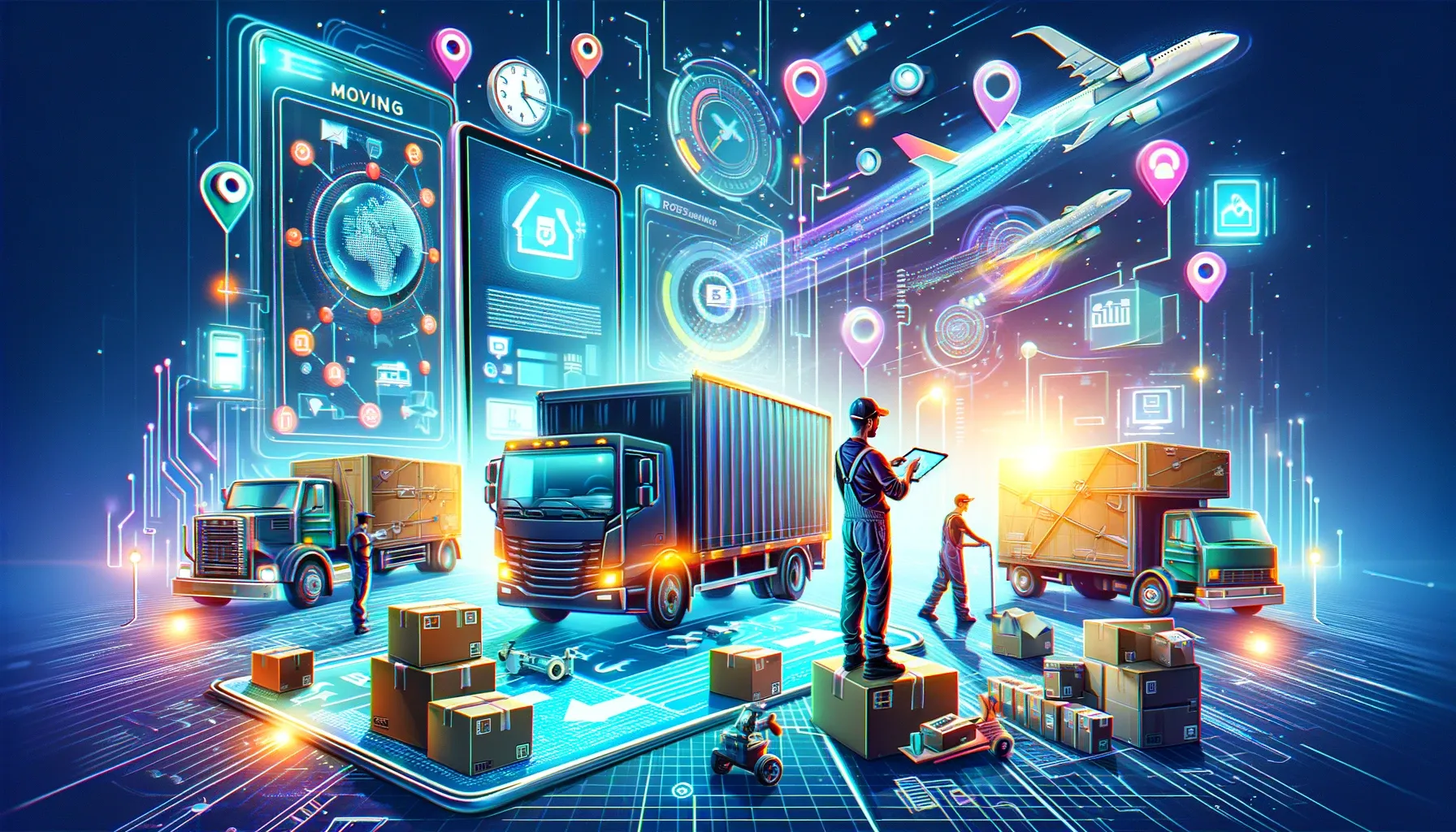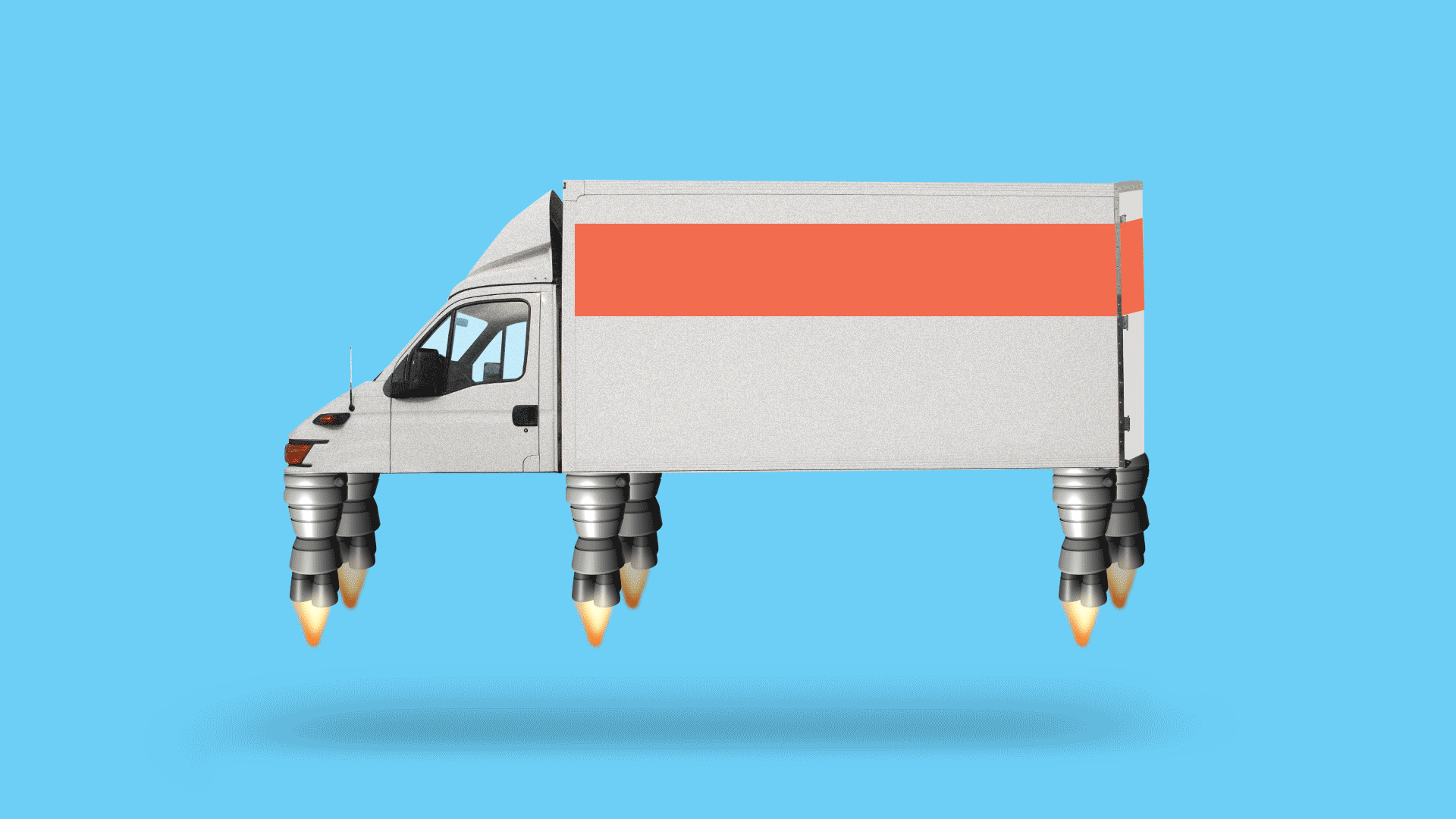Why the Moving Industry is Perfectly Positioned for Technological Disruption
Discover how technological advancements are reshaping the moving industry, from virtual surveys to AI integration, meeting evolving consumer expectations for transparency and sustainability.


Valued at $25 billion, the moving industry stands among the top sectors poised for significant change, particularly through technological disruption [1]. As you seek moving services—whether it's residential moving, acquiring a moving quote, or navigating the complexities of a long-distance move—you're entering a landscape ripe for innovation.
With advancements in moving technology, such as virtual surveys for an accurate inventory list and moving estimate software, the sector is at a crucial tipping point. This shift not only reflects in improved moving experiences but also aligns with evolving consumer expectations for transparency, efficiency, and convenience in relocation services [1].
The Current State of the Moving Industry
In the current landscape, the moving industry is navigating through a period of significant change, influenced by various economic factors and shifting consumer behaviors. Here's a closer look at the current state of the moving industry:
- Economic Influences and Moving Trends:
- The industry is experiencing a slowdown due to high-interest rates and economic concerns, which has led to a decrease in home sales and potentially fewer moves [1].
- Despite these challenges, people are still relocating, albeit to different destinations than before. In 2022, there was a notable shift with individuals moving out of states like Illinois, California, and New Jersey, and moving into states such as South Carolina, North Carolina, and Tennessee [2].
- Predictions for 2024 suggest higher interest rates and tighter budgets, possibly resulting in fewer moves and house sales. However, an increase in job-seeking activity could counterbalance this trend, leading to more moving activity [3].
- Impact on Moving Companies and Consumer Choices:
- With the economic pressures and high inflation, those who do move are likely to have tight budgets, which could lead more people to opt for DIY moves [4].
- This shift towards DIY moving solutions poses a challenge for traditional moving companies, potentially reducing their business. However, leveraging moving insurance programs could be a strategic move to earn more from booked moves [5].
- The industry is predominantly composed of small businesses, with 47.8% employing fewer than 5 people. This structure highlights the potential vulnerability of these businesses to economic fluctuations and changing consumer preferences [7].
- Transformation and Growth Opportunities:
- Despite the challenges, the moving industry is also experiencing significant transformations, adapting to new consumer demands and technological advancements. Tech-driven solutions like virtual surveys, GPS tracking, and digital inventory systems are streamlining operations and increasing transparency, enhancing the overall moving experience [8].
- Sustainable moving practices and customized services are gaining popularity, indicating a shift towards more eco-friendly and tailored moving solutions [8].
- The integration of AI and Machine Learning is improving logistics management, optimizing routes, and personalizing the moving experience, presenting opportunities for innovation and growth within the industry [8].
This overview of the current state of the moving industry underscores the complex interplay between economic factors, consumer behavior, and technological advancements, shaping the future trajectory of this sector.
Technological Advancements and Their Impact
In the realm of moving technology, several advancements have significantly altered how moving services operate, enhancing efficiency, safety, and customer satisfaction. Here's a closer look at these technological innovations and their impact:
- Virtual and Digital Innovations:
- Virtual Surveys and Estimates: The traditional in-home survey has been replaced by video surveys, making the estimation process faster and more convenient for both movers and customers. This digital approach has increased sales efficiencies and enabled sales teams to close more business, all while providing a more accurate assessment of moving needs without the necessity for physical presence [2][12][16].
- AI and Machine Learning: These technologies are not just buzzwords but are actively transforming the moving industry. From streamlining sales processes with AI-based surveys to optimizing logistics management and route planning with Machine Learning, these innovations offer predictive, efficient, and personalized moving experiences [1][8][12].
- Digital Inventory Management: Leveraging barcodes, QR codes, and RFID tags for inventory management has made tracking and managing items more precise. This technology ensures a more organized and monitored moving process, significantly reducing the chances of items being lost or misplaced [16].
- Eco-friendly and Customer-centric Solutions:
- Sustainable Moving Practices: More moving companies are adopting eco-friendly practices, such as using biodegradable packing materials and optimizing routes for fuel efficiency. These practices not only appeal to environmentally conscious consumers but also contribute to the overall sustainability efforts of the industry [14][17].
- Personalized Moving Services: Catering to the unique needs and preferences of each client, personalized services are becoming the norm. This approach, supported by technology, allows for a more tailored moving experience, enhancing customer satisfaction [1].
- Operational Efficiency and Safety:
- Telematics and Fleet Operations: The use of telematics in fleet operations improves efficiency, reduces fuel costs, and enhances driver safety. Additionally, electronic logging devices have replaced traditional logbooks, ensuring compliance with hours of service regulations and improving the accuracy of duty status recording [15].
- Automated Packing and Unpacking Technologies: While still in the exploration phase, robotics and smart packing algorithms promise to streamline the packing and unpacking process, potentially revolutionizing this labor-intensive aspect of moving in the future [14].
These technological advancements are not merely trends but are setting new standards in the moving industry. By embracing these innovations, moving companies can not only meet but exceed the evolving expectations of their customers, ensuring a seamless and stress-free moving experience.
Consumer Behavior and Expectations
In understanding the evolving landscape of consumer behavior and expectations in the moving industry, several key trends have emerged, reshaping how moving services cater to their clients. These trends underscore the importance of flexibility, transparency, and personalization in meeting today's consumer demands:
- Hybrid Moving Solutions:
- Consumers are increasingly leaning towards hybrid moving options, combining the cost-effectiveness of DIY moving with the security and convenience of full-service offerings [1].
- This trend highlights a desire for more control over the moving process, allowing customers to select specific services tailored to their needs, such as packing, loading, transportation, and unpacking [21].
- Transparency and Fair Pricing:
- Customization and On-demand Services:
- The expectation for personalized moving experiences is growing, with consumers seeking services that cater directly to their specific needs and preferences [10].
- On-demand moving services have become increasingly popular, offering customers flexibility in budget, timeline, and the types of items being moved [14].
- Utilization of technology, such as functional mobile apps and virtual estimates, is essential in reaching customers, particularly millennials who value diverse and flexible moving solutions [6].
- Sustainability and Environmental Concerns:
- There is a growing demand for eco-friendly practices within the moving industry. Consumers expect companies to adopt sustainable practices, such as using biodegradable packing materials and optimizing routes for fuel efficiency [11][10].
- Companies that implement carbon-neutral transportation options and other eco-friendly practices can attract environmentally conscious consumers [10].
- Enhanced Communication and Real-time Updates:
- Today's consumers demand high levels of transparency and communication, expecting real-time tracking information, delivery notifications, and responsive customer service [11].
- Efficient returns management and seamless online shopping experiences, with faster delivery times and real-time tracking updates, are now standard expectations [11].
These trends reflect a significant shift in consumer behavior and expectations, emphasizing the need for moving companies to adapt and innovate. By embracing these changes, businesses can not only meet but exceed consumer demands, ensuring a more personalized, efficient, and environmentally conscious moving experience.
Challenges Facing Traditional Moving Companies
In facing the winds of change, traditional moving companies encounter a myriad of challenges that necessitate swift adaptation and innovation. Here's a closer look at the hurdles these companies must overcome:
- Adoption of Technology:
- Outdated Processes: Many traditional moving companies have been slow to embrace new technologies, relying instead on methods that have been in place for decades [12]. For instance, the in-home estimate process, a standard in the industry, has been identified as ripe for enhancement through digital means [12].
- Manual Move Management: The manual, labor-intensive approach to managing moves is another area where technology can bring significant improvements. Traditional methods are not only cumbersome but also less efficient compared to modern, automated solutions [13].
- Regulatory Challenges: The Electronic Logging Device (ELD) mandate, which came into effect in December 2017, presents a particular challenge for smaller moving companies due to the costs associated with implementing these devices [6]. Additionally, potential changes in immigration policies, such as the termination of the H-1B program, could exacerbate labor shortages, further straining resources [6].
- Professionalization and Service Diversification:
- Quality and Brand Value: Professionalization and standardization across services can help moving companies deliver high-quality services consistently. Utilizing customer reviews effectively can also bolster a company's brand value in a competitive market [1].
- Service Portfolio Expansion: Successful companies are diversifying and specializing, offering a wide range of services from specialized handling to commercial and residential moving, as well as warehousing services [2]. This specialization allows companies to act as experts within their niche, partnering with external entities to broaden their service offerings [2].
- Adaptation to Market Demands: In response to changing market demands, companies are expanding their services to include options like containerized moving and storage, catering to a broader clientele [2].
- Global Perspective and Competitive Landscape:
- International Moving Services: There's an increasing demand for international moving services, necessitating a global perspective among moving companies. This trend highlights the need for businesses to adapt quickly and efficiently to stay competitive in a rapidly evolving landscape [20].
- Competitive Edge: Companies that fail to adapt to advancements such as video survey technology risk losing their competitive edge. Staying ahead requires not only the adoption of new technologies but also a keen eye on global trends and consumer demands [12][20].
These challenges underscore the importance of innovation and flexibility for traditional moving companies. By embracing new technologies and diversifying their service offerings, these businesses can navigate the complexities of the modern moving landscape, ensuring their survival and growth in an increasingly competitive market.
The Future of Moving: Predictions and Trends
As we look towards the future of the moving industry, several predictions and trends are beginning to take shape, promising to redefine the landscape of relocation services. These trends focus on sustainability, technology, and customer-centric practices, which are rapidly becoming the new standard in the industry.
- Sustainability Initiatives:
- Eco-Friendly Practices: The moving industry is witnessing a significant shift towards sustainability. Companies are actively adopting green practices, such as using eco-friendly packing materials like biodegradable bubble wrap and recyclable cardboard boxes [11][20]. Moreover, the investment in hybrid or electric trucks is on the rise, reducing the carbon footprint associated with long-distance moves [14][21].
- Containerized Shipping for Cars: An innovative approach being explored is containerized shipping, which presents an opportunity for moving companies to tap into the automotive industry [1]. This method not only offers a secure way to transport vehicles but also aligns with the sustainability goals by potentially reducing emissions compared to traditional car transport methods.
- Professionalization and Standardization:
- Setting Industry Standards: There's a growing consensus among experts that the time is ripe for a leader to emerge, one that can professionalize the industry by creating standardized prices and expectations for high-quality service [3]. This move towards professionalization not only benefits customers by providing clear, upfront pricing but also elevates the industry's reputation as a whole.
- Building Strong Customer Relationships:
- Exceptional Customer Service: In today's competitive market, building strong customer relationships is more important than ever. Companies are finding success through exceptional customer service, loyalty programs, and leveraging positive online reviews [11]. These strategies not only help in retaining customers but also play a crucial role in attracting new ones through word-of-mouth and online visibility.
The future of the moving industry is undoubtedly geared towards innovation, with a strong emphasis on eco-friendly practices, professionalization, and customer satisfaction. By embracing these trends, moving companies can look forward to not only thriving in a competitive market but also making a positive impact on the environment and community.
Conclusion
Through this exploration of the moving industry, we've seen how technological innovation, shifting consumer expectations, and the drive for sustainability are steering the sector towards a promising horizon. The adaptation of digital tools and services, such as virtual surveys and eco-friendly practices, underscores a transformative period where efficiency meets customer satisfaction. This shift not only enhances the moving experience but also meets the evolving demands of today's consumers who prioritize transparency, customization, and environmental responsibility in their service choices.
Looking ahead, the future of the moving industry is ripe with opportunities for growth and innovation. By embracing technology and sustainability, companies can set new standards for service quality and environmental stewardship, ensuring a competitive edge in a dynamic marketplace. For those ready to move with the times without the hassle of traditional methods, Drifted.ai offers a seamless experience—ensuring you never speak to a moving salesman or broker again. As we journey into this new era of moving services, it's clear that the industry's evolution will continue to provide boundless opportunities for improvement and excellence, making each move a step towards a more efficient and sustainable future.
FAQs
Q: What classification code is assigned to moving companies?
A: The Standard Industrial Classification (SIC) code for moving companies is 42149902. This code is used specifically for businesses specializing in Household Goods Moving and Storage, Local Mailing List. It's a valuable tool for identifying and targeting professionals in the moving and storage industry.
Q: Can you explain what a moving service is?
A: A moving service, also known as a moving company, removalist, or van line, is a business that assists individuals and companies in transporting their belongings from one location to another. These services can encompass a range of tasks including packing, loading, moving, unloading, unpacking, and organizing the items to be moved, with some companies offering comprehensive relocation solutions.
References
[1] - https://www.vonigo.com/disrupt-moving-industry/
[2] - https://creaunited.com/change-and-growth-within-the-moving-industry/
[3] - https://my1stchoicemovers.com/trends-and-innovations-in-the-moving-industry/
[4] - https://www.linkedin.com/pulse/changing-consumer-behavior-courier-logistics-sector
[5] - https://hanhaa.com/changing-consumer-behaviour-and-the-impact-on-logistics/
[6] - https://www.mymovingreviews.com/move/moving-industry-challenges/
[7] - https://www.dmnews.com/revolutionize-your-moving-business-with-technology-a-comprehensive-guide/
[8] - https://www.movemate.ca/blog/the-latest-trends-in-moving-services-whats-new-in-the-industry
[9] - https://moversdev.com/moving-trends-analysis/
[10] - https://verifiedmovers.com/adapting-to-changing-consumer-trends-and-preferences-in-the-moving-industry/
[11] - https://twochicksmoving.com/is-the-moving-industry-slowing-down-unveiling-the-truth/
[12] - https://www.linkedin.com/pulse/evolution-technology-moving-industry-daniela-alpert-mba
[13] - https://yembo.ai/blog/how-the-digital-transformation-is-shaking-the-dust-off-the-moving-industry
[14] - https://www.globalsmt.net/world-news/8-latest-trends-and-tech-innovations-in-the-moving-industry/
[15] - https://relocationinsurance.com/five-ways-technology-is-impacting-the-moving-industry/
[16] - https://themovinggurus.com/the-impact-of-technology-on-the-moving-industry-trends-and-insights/
[17] - https://busybeemovers.ca/2024/01/04/how-new-technologies-are-revolutionizing-the-moving-industry/
[18] - https://www.linkedin.com/pulse/influence-modern-technology-moving-services-leonorapackersmovers-hjonc?trk=public_post_main-feed-card_feed-article-content
[19] - https://www.convolo.ai/blog/the-latest-moving-industry-trends-what-you-need-to-know
[20] - https://markets.businessinsider.com/news/stocks/the-future-of-moving-innovative-trends-and-bold-predictions-from-let-s-get-moving-experts-1032932923
[21] - https://innotechtoday.com/8-latest-trends-and-tech-innovations-in-the-moving-industry/
[22] - https://fastercapital.com/content/Consumer-behavior--Understanding-Industry-Trends-through-Consumer-Behavior-Patterns.html

